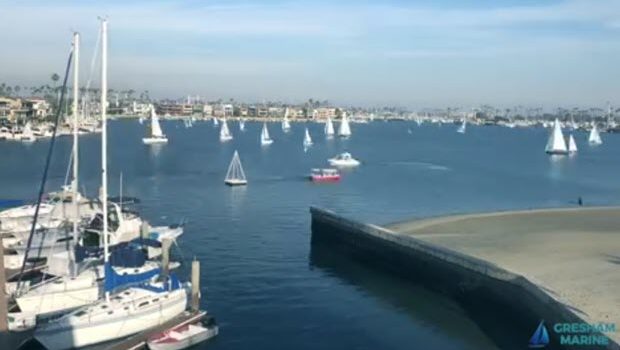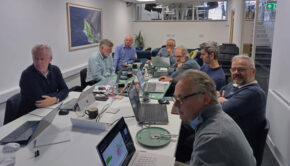Dinghy handicap racing grows the sport
Published on January 3rd, 2018
Paul Elvstrom, the notable 4-time Olympic gold medalist from Denmark, also knew something about the workings of the sport. Looking at the landscape in 1990, Elvstrom observed, “It is much harder to build a strong and vibrant International Class Association than design a new boat.”
Creating the inertia to sell enough boats, and then managing boat owners to be committed to a one design class, is hard. For keelboats, the fallback is handicap racing, but the same cannot be said about dinghies. Using rating systems to race dissimilar dinghies is not common in North America.
A lack of dinghy handicap racing is a significant issue in our sport. There are loads of used small boats sitting idle without a racing option, and manufacturers unable to sell new boats for the same reason. But if there was frequently scheduled dinghy handicap racing, the ball starts rolling again.
Alamitos Bay Yacht Club, a notable one design dinghy hub in Southern California, annually foregoes the class structure for their 18th Boxing Day Pursuit Race. Fifty-five boats in seventeen different classes provided a challenge for the handicappers, with boats ranging from prams to multihulls, Lido 14s to Solings. The Boxing Day Race had it all.
“With the assortment of different classes, you meet people that you haven’t seen since last year,” said Robin Townsend.
The Race Committee was kept busy with over twenty separate starts – some only one minute apart. The Sabot, Optimists and Lidos were divided into sub-classes of A’s and B’s to provide opportunities for the less experienced sailors to win, with the race course keeping everyone within the confines of the holiday-decorated bay.
The pursuit race format builds the handicap into each boat’s starting time. Boats are started in reverse order of their speed; the slower boats racing for over two hours, and the faster boats such as the Formula 18 catamaran for only a little over an hour.
As each class’s assigned start time arrived, they lined up and tried to catch the slower boats that had started ahead of them while trying to avoid being caught by the faster boats behind them.
Tate Christopher, in his Optimist, was sailing an excellent race, leading the race for over an hour, until the Naples Sabot sailed by Robin Townsend finally closed the gap and took the lead. However, with some 40 minutes to sail and the other classes relentlessly closing, her lead was tenuous.
The Lido 14s, Cal 20s and Lasers who had given the Optimists a fifty-minute head start were starting to close the gap and it was only a matter of time. With only about ten minutes left, the Lido 14s swept past the lead Sabot to take the lead. Next to take the lead was the Cal 20, but it was Dan Delave and Eileen Haubl in their F18 that was first to finish.
With six classes in the top seven, the handicappers proved their worth, and everyone was rewarded with chili and chips after the races. The big winner, however, was the opportunity to get boats off their trailers for something different. Our sport needs more of that.
Source: Mark Townsend, Craig Leweck









 We’ll keep your information safe.
We’ll keep your information safe.